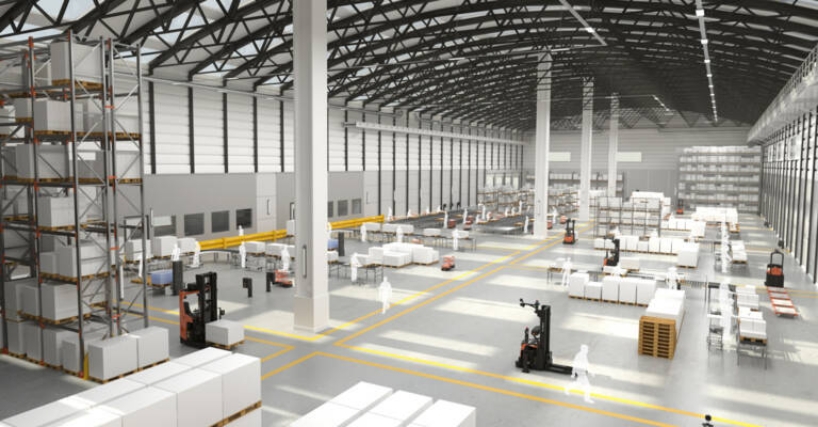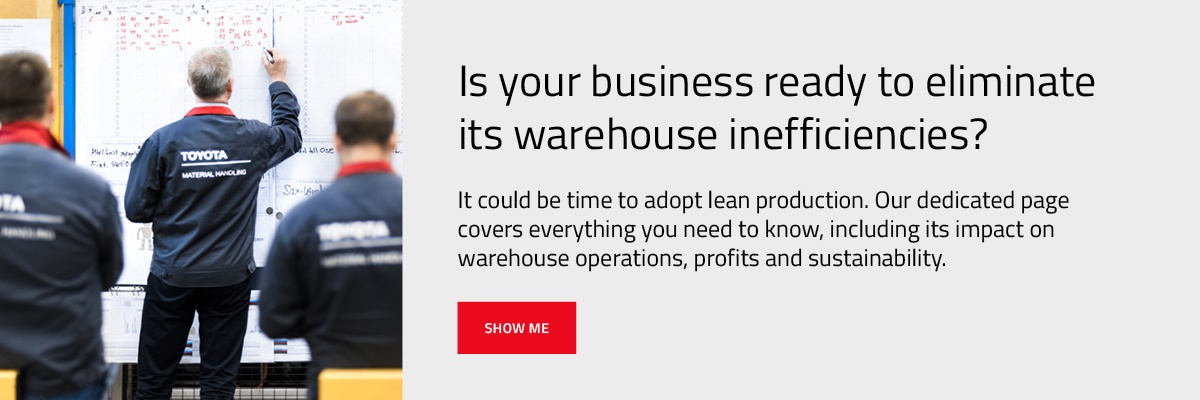Lean automation is an extension of the principles of lean manufacturing. Using lean techniques such as Kaizen, your business can establish areas of improvement in your supply chain and implement automation to help overcome them.
This article takes a deeper look at what lean automation involves, how you can identify opportunities to implement the solution and the benefits it can offer to your business.
- What is lean automation?
- How to identify opportunities to implement lean automation.
- What are the benefits of lean automation?
What is lean automation?
Improving performance, ensuring accuracy, meeting compliance and reducing waste — these are all goals warehouses strive to achieve. Lean automation aims to help warehouses meet these goals. This can be done by implementing a range of automated solutions across the supply chain.
Automation software is one of the most prevalent solutions available. This type of software aims to take over manual tasks such as stock-taking or asset management.
Automated guided vehicles (AGVs) also help warehouses streamline their processes and reduce errors building up in the production cycle. These types of vehicles range from tow trains to carts and shuttles. Find out more about these vehicles in more detail and the benefits they can offer your business here.
Before introducing lean automation, you should identify areas of your operation that will benefit from it. This can be done by conducting a warehouse audit using the PDCA model.
How to identify opportunities to implement lean automation.
Investing in lean automation may come at a cost. It is not a one size fits all approach. Therefore, you should establish the areas of your warehouse that will benefit from it the most.
This can be done using the PDCA model. The model is broken down into four steps; plan, do, check and act. It aims to provide a simple and effective approach for solving problems and managing change.
Let us take a look at how you can use the model to identify opportunities to implement lean automation.
Step one: Plan.
Before you can look any further, you should spend some time identifying areas of your warehouse that need improving and decide on the best solutions to help fix the problem.
For example, your warehouse might face issues when it comes to warehouse picking errors. If this is the case, you might need to invest in choosing software such as a stock management system.
Once you have agreed on a plan, it is time to take action.
Step two: Do.
Now you have decided on the areas of your warehouse that could benefit from lean automation; you should apply the solution in the workplace. Be aware that issues might arise at this phase, so try incorporating your plan on a small scale and in a controlled environment first.
This might involve utilising a stock management system in one area of your warehouse. For example, you may just decide to try out the solution in your picking area once or twice a week.
Step three: Check.
This is an essential step in the process that cannot be missed. During the check stage, you will need to audit the execution of your plan and see if the initial plan actually worked.
If you notice picking errors reduce dramatically, it is clear the solution is working and might be worth investing on a larger scale. However, if picking errors remain the same, this might suggest the type of automation you implemented is unsuitable for you.
You should work closely with your team at this stage. Ask for feedback to identify any problems and whether the automated solution has improved the operation.
Step four: Act.
You have reached the final stage of the process. It is now time to decide whether you want to invest in the automated solution or whether something different might be more appropriate. If you decide to try out a different solution, you should follow the same process again. This repetitive approach helps your team find and test solutions and improve them through a waste-reducing cycle.
Is your business ready to harness the power of lean production?
If so, download this guide. You will learn about the benefits of lean production and discover the most effective techniques to implement to achieve success.
What are the benefits of lean automation?
Adding automation can bring your company multiple benefits while still adhering to lean manufacturing principles if done correctly. Some of these benefits include:
Increased worker safety.
Every manufacturing business wants to reduce the number of accidents in their warehouse.
You can keep your employees safer by automating dangerous processes while reducing errors. This might include a solution such as an automated storage and retrieval system. This system is designed to keep employees out of danger on a warehouse floor, where forklift accidents occur.
Reduced lead times.
Many different types of lean automation can speed up processes and ultimately reduce the time it takes to get your goods to customers. These include AGVs, automated conveyors and sortation systems. Their main benefit is they require less human input, especially for traditionally time-consuming tasks.
Improved accuracy.
Mistakes lead to lost time. Lost time leads to waste building up in your warehouse. By introducing lean manufacturing, you can improve accuracy across your entire warehouse. Solutions such as a Warehouse Management System (WMS) can help you ensure workflow and production levels remain consistent, which is crucial for achieving warehouse accuracy.
Reduce costs.
One of the ultimate goals of lean automation is to help businesses reduce costs.
For example, warehouse robotics can help reduce errors and allow workers to maintain a high level of quality when they undertake particular day-to-day tasks. Furthermore, by opting for a battery-powered fleet, fuelling costs can be minimised and the impact on the environment can be reduced.
Lean automation is only a small part of the lean methodology. We have put together a detailed guide to help you learn more about the concept and how it works in practice.
It is time to unlock the power of lean production in your warehouse.
Your lean production tools and techniques journey starts here. Learn more about the concept, its benefits and the different techniques and tools available by downloading a copy of our guide.
Ready to get started? Access your copy below.
%20(1)-1-1.jpeg)

